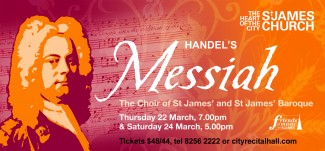Opera Review: La Traviata/Opera Australia
La Traviata – Giuseppe Verdi
Opera Australia, 3 July 2015
It is only two years since Opera Australia last revived Elijah Moshinsky’s 1994 production ofLa Traviata. In this winter season it follows the revival of Graeme Murphy’s 1990 production of Turandot and precedes a revival of Moshinsky’s 1999 production of Don Carlos. In these difficult financial times Opera Australia is clearly making extensive use of its earlier investment in fine productions which have stood the test of time – unlike some provocative productions which have disappeared after a single season because they sought to be confrontational rather than to serve the actual opera being performed.
This production of La Traviata is a sumptuous traditional staging which brings to life thefashionable world of nineteenth century Paris. The magnificent sets and the lavish costumes are especially impressive, and the atmospheric lighting of Nigel Levings has been wonderfully recreated by David Parsons. In this revival, directed by Tama Matheson, the production retains its full freshness and drama.
In the title role of Violetta Lorina Gore is a worthy addition to the list of fine sopranos who have previously sung in this production. Her voice is well-focused and maintains its beauty throughout her range. She has substantial reserves of power but also sang with great delicacy in soft passages such as Ah forse è lui, and produced an exquisite filament of sound for Ditealla giovine. She also negotiated the coloratura of Sempre libera admirably. Gore is visuallywell-suited to the role and convincingly portrayed the dramatic transition in Act 2 from elation to despair. In the last act she was visually a more convincing consumptive than is generally encountered.
Alfredo was sung by the Balkan tenor Rame Lahaj. Although it is only five years since he made his international debut he is already a most accomplished performer. His voice may not be as large as some who have sung this role but it is refined, well centred and has a goodItalianate resonance. He sang an extrovert brindisi but also produced delicate phrasing inParigi, O cara. He moves elegantly on stage and epitomises the romantic hero: tall, dark andgood looking. Indeed, how many Alfredos can carry their ailing Violetta right across the stage to her chair? Dramatically, the evolving interactions between Gore and Lahaj were a pleasure to behold.
José Carbó repeated the role of Giorgio Germont which he sang in 2013. Since then his interpretation has matured further and he convincingly traced Germont’s emotional path from the aggrieved father to one who is totally remorseful. Vocally, Carbó is fully in command of the role. He sang Pura sicome un angelo with sensitivity and Di Provenza with eloquence,untroubled by its high tessitura.
The smaller roles were all well performed. As Flora, Dominica Matthews was a genial hostess and Pelham Andrews was a suitably offended Baron Douphol. Natalie Aroyan sang well in the supporting role of Annina and as Dr. Grenvil Gennadi Dubinsky was suitably sonorous and authoritative. John Longmuir was a lively Gastone and Luke Gabbedy an animated Marquis.
The Opera Australia Chorus performed with their customary accuracy, discipline andimpressive weight of tone. Particularly notable were their unanimity of attack in loud passages and their rhythmic precision when singing in the background. They are a credit to Chorus Master Anthony Hunt and his assistant Thomas Johnson. Also to be admired is Matthew Barclay’s choreography that transforms the chorus successively from members of high society to Spanish dancers and gypsies.
From the very opening of the Act 1 prelude it was clear that conductor Renato Palumbo was concentrating on the sensitive shaping of each individual phrase. This attention to detail was evident throughout the performance, especially in the more delicate orchestral passages. The performance was well paced and the rubato flowed naturally. The Australian Opera and Ballet orchestra responded admirably with particularly distinguished contributions from all woodwind departments.
Opera Australia’s publicity says that La Traviata is the most frequently performed of all operas. If so, then there is good reason, and this production is an ideal way to experience it. It ticks all the boxes: wonderful music, visually beautiful production, excellent singing and compelling dramatic interaction between the principals. There are a further eight performances until 22 July. See it if you can!
Larry Turner





